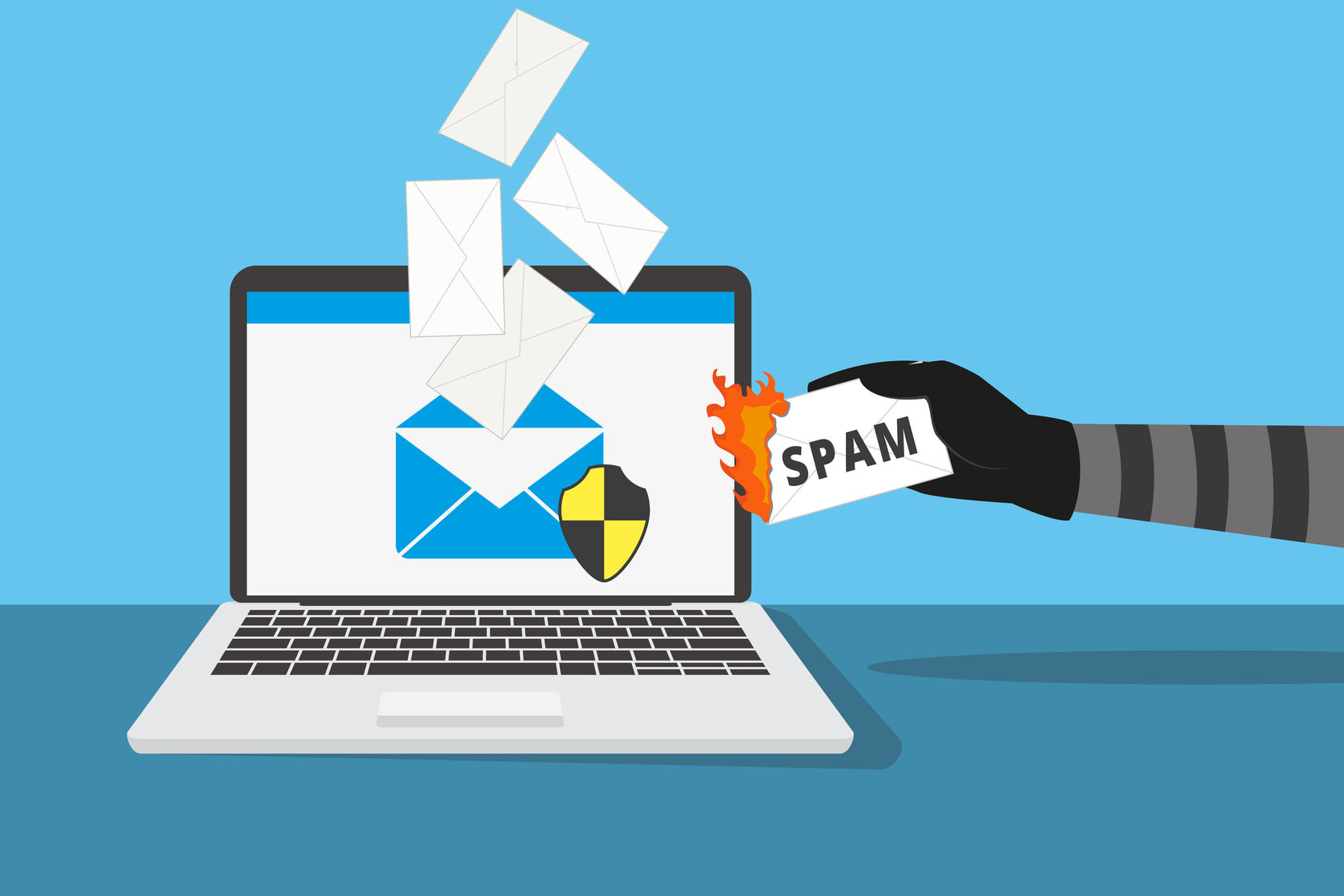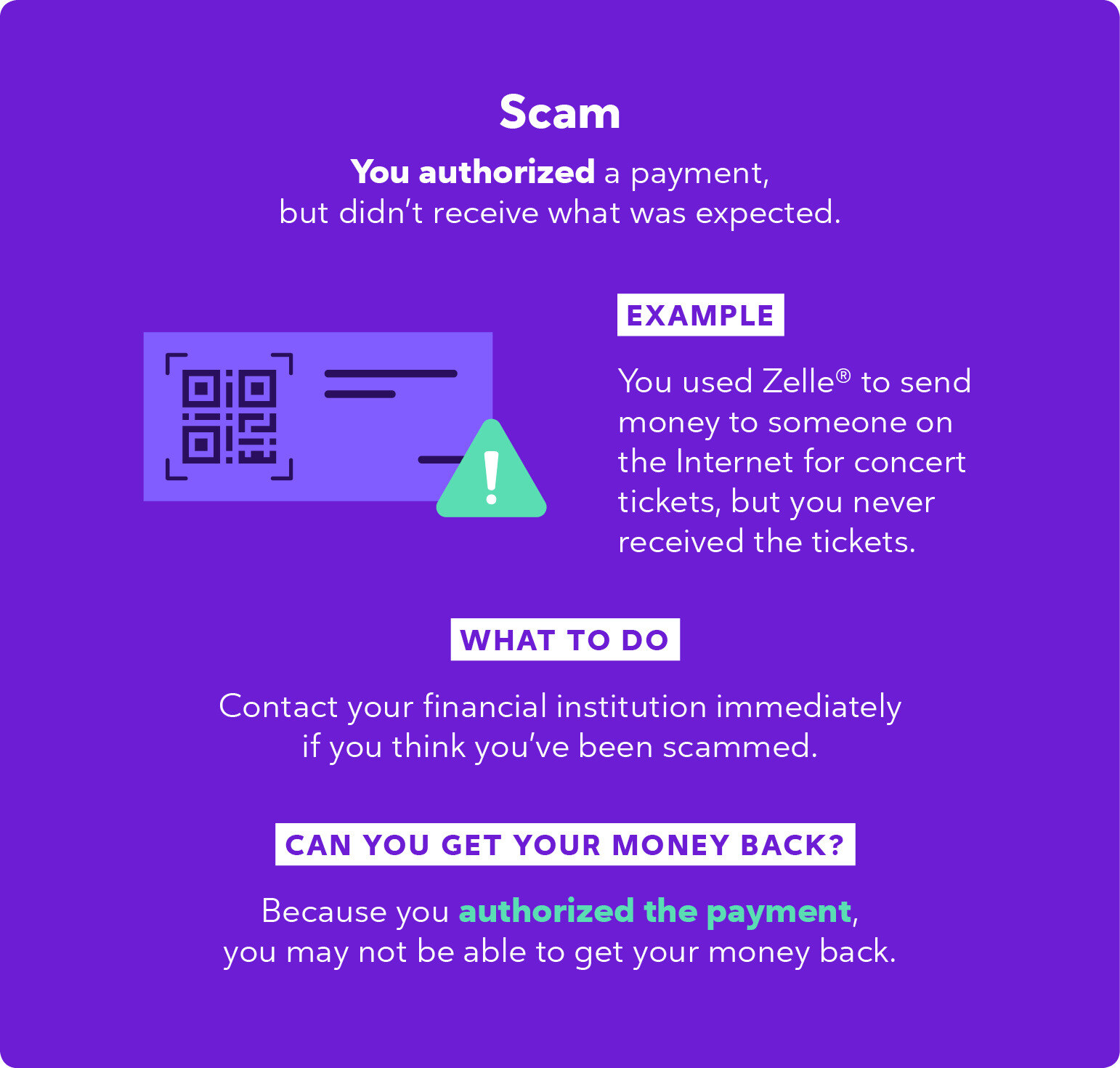Introduction
In today’s digital age, email has become an essential mode of communication. However, with the vast amount of emails flooding our inboxes daily, it is crucial to be vigilant and cautious, as scammers are constantly devising new ways to deceive unsuspecting individuals. Falling victim to a scammer can have serious consequences, including financial loss, identity theft, and compromised personal information.
Scammers often resort to email as a means to gain access to sensitive data or manipulate individuals into providing personal information. They disguise themselves as trustworthy entities, trying to deceive recipients into divulging confidential details or performing actions that can compromise their security.
To protect yourself and maintain a secure online environment, it is imperative to familiarize yourself with telltale signs of scammer emails. This article aims to provide you with valuable insights and tips to identify potential scam emails, empowering you to avoid falling prey to these fraudulent tactics.
Signs of a Scammer Email
Scammers are continually refining their techniques to make their emails appear legitimate. However, there are several red flags that can help you identify a potential scammer email:
- Suspicious Email Addresses: Pay close attention to the sender’s email address. Scammers often use email addresses that mimic the names of reputable companies. Look out for slight variations, misspellings, or additional numbers or characters.
- Poor Grammar and Spelling Mistakes: Scammer emails often contain grammatical errors, spelling mistakes, and awkward sentence structures. Legitimate organizations usually have strict quality control measures in place, ensuring their communications are error-free.
- Urgency and Demands for Personal Information: Scammers employ psychological tactics to create a sense of urgency and fear, urging you to provide personal information or act immediately. Be cautious if an email demands immediate action without proper explanation or verification.
- Generic Greetings and Lack of Personalization: Legitimate organizations typically address recipients by their names. If an email begins with a generic greeting like “Dear Customer” or lacks personalization, it may be a sign of a scammer attempting to cast a wide net.
- Suspicious Attachments or Links: Exercise caution when opening email attachments or clicking on links, especially if they seem unexpected or out of context. Scammers often use malicious attachments or links to gain unauthorized access to your computer or steal sensitive information.
- Sense of Fear or Intimidation: Scammers may employ fear tactics to manipulate you into taking the desired action. Emails containing threats, warnings of dire consequences, or intimidation should be treated with suspicion.
- Requests for Money or Financial Information: Be wary of emails requesting money, asking for financial details, or proposing lucrative opportunities that seem too good to be true. Legitimate organizations rarely solicit financial information via email.
- Review and Verify the Email Domain: Scammers often create fraudulent email domains that closely resemble those of reputable companies. Double-check the email domain by hovering over the sender’s email address to ensure it matches the legitimate organization’s domain.
By familiarizing yourself with these signs, you can enhance your ability to recognize scammer emails, safeguard your personal information, and protect yourself from falling victim to fraud.
Suspicious Email Addresses
One of the key indicators of a scammer email is the suspicious email address from which it is sent. Scammers often use email addresses that closely mimic the names of legitimate companies or organizations, with the intention of tricking recipients into believing the email is genuine.
Here are some warning signs to watch out for:
- Misspellings or Slight Variations: Scammers may alter familiar email addresses by inserting additional numbers, characters, or misspelling the domain name. For example, instead of “@paypal.com,” a scammer email address might be “@paypa1.com” or “@paypa1support.com”. Be wary of anything that deviates even slightly from the official domain.
- Unusual Domain Extensions: Scammers often use unusual or uncommon domain extensions, such as “.biz” or “.info”, instead of the more common “.com” or “.org”. While not all emails with non-standard extensions are scams, it’s essential to exercise caution and scrutinize the content of such emails more thoroughly.
- Generic or Free Email Providers: Scammers frequently use free email providers like Gmail, Yahoo, or Hotmail to create their scammer email addresses. While legitimate individuals and organizations also use these providers, be cautious if an email claiming to be from a reputable company is sent from a generic email address instead of an official domain.
- Inconsistent Display Name and Email Address: Pay attention to any discrepancies between the display name and the actual email address. Scammers may try to mislead by using a well-known company name as the displayed name, while the email address itself indicates a different entity.
- Impersonation of Government Agencies: Scammers may impersonate government agencies or law enforcement organizations in their email addresses to gain credibility. Be wary of any emails claiming to be from such institutions and carefully verify their authenticity.
Remember, legitimate organizations typically have proper email addresses that match their official domain names, and they rarely deviate from this standard. If you receive an email with a suspicious email address, exercise caution and refrain from interacting further until you can verify its legitimacy.
Poor Grammar and Spelling Mistakes
Poor grammar and spelling mistakes are common occurrences in scammer emails and can serve as strong indicators of their fraudulent nature. Legitimate organizations typically have quality control measures in place to ensure that their communications are error-free. Here’s why you should pay attention to grammar and spelling in emails:
- Professional Organizations Have High Standards: Reputable companies and organizations take pride in their professionalism and attention to detail. They invest in quality assurance processes to maintain the integrity of their communications. Consequently, scammer emails often contain noticeable grammar errors, misspelled words, and awkward sentence structures.
- Phishing Emails Are Often Mass-Produced: Scammers send out mass-produced emails in the hope of deceiving as many people as possible. Due to the sheer volume of emails they generate, they may not give proper attention to grammar and spelling. Consequently, these emails often contain obvious mistakes that signal their illegitimacy.
- Language and Writing Style: Scammers may not have English as their first language, resulting in grammatical errors and awkward sentence construction. If an email claims to be from a company or organization based in an English-speaking country, yet contains noticeable language mistakes, it should raise doubts about its authenticity.
- Unprofessional Communication: Legitimate companies invest time and effort into crafting clear and professional communications. If you receive an email that is riddled with grammar and spelling errors, it suggests a lack of professionalism on the sender’s part and raises suspicions about their intentions.
- Request for Verification Due to Errors: Some scammers deliberately introduce grammar and spelling mistakes as part of their strategy. They may claim that the errors occurred due to technical issues or system errors and ask you to provide personal information for verification purposes. Be highly skeptical of such requests, as they are designed to trick you into divulging sensitive details.
Paying attention to grammar and spelling can help you distinguish between legitimate emails and scammer attempts. If an email contains numerous mistakes, it is advisable to proceed with caution, refrain from sharing personal information, and independently verify the email’s authenticity.
Urgency and Demands for Personal Information
Scammers often employ psychological tactics to create a sense of urgency and fear, coercing recipients into providing personal information or taking immediate action. Recognizing these urgency-driven demands can help you identify a potential scammer email. Here’s what to watch out for:
- Immediate Action Required: Scammers frequently use fear tactics, claiming that urgent action is necessary to prevent negative consequences or gain a supposed benefit. They may insist that failure to act immediately will result in account suspension, loss of funds, or legal trouble. Legitimate organizations will typically communicate important matters in a timely manner, without pressuring you to make hasty decisions.
- Unusual Requests for Personal Information: Be cautious if an email requests your personal information, such as your social security number, financial details, or login credentials, especially if the request seems unrelated to any previous interactions with the organization. Legitimate organizations have secure methods for collecting personal information and generally do not seek sensitive details via email.
- Threats and Consequences: Scammers may imply or directly threaten negative consequences if you do not comply with their demands. They may threaten to close your account, report you to the authorities, or expose your personal information. Legitimate organizations do not resort to such tactics to communicate with their customers.
- Unsolicited Prize Notifications: Some scammer emails may claim that you have won a prize or a lottery, presenting an opportunity that seems too good to pass up. However, legitimate organizations typically do not notify winners via email, especially if you have not participated in any contests or lotteries.
- Demand for Prepayment or Financial Assistance: Emails requesting payment in advance or asking for financial assistance are classic red flags of scammer activity. Scammers may pose as acquaintances in distress or ask for an upfront fee to access a promised service or inheritance. Genuine organizations do not randomly ask for money or financial support via email.
- Emergency Appeals: Scammers may depict urgent situations or humanitarian crises, appealing to your sympathy and encouraging you to donate money or provide personal information hurriedly. Trustworthy charitable organizations typically have established channels for donations and do not rely solely on email solicitations.
Remain vigilant and cautious when faced with unexpected demands for personal information or urgent requests. Take the time to verify the authenticity of the email and the sender’s identity through independent channels, such as contacting the organization directly or visiting their official website.
Generic Greetings and Lack of Personalization
Legitimate organizations value personalization and make an effort to address individuals by their names in their communications. Scammer emails, on the other hand, often use generic greetings or lack any personalization, making them easily distinguishable. Here’s what to look out for:
- Dear Customer: Scammers often begin their emails with generic greetings such as “Dear Customer” or “Valued Customer” instead of addressing you by your name. Legitimate organizations have access to your personal information and will typically address you by your name or username.
- Lack of Account-Specific Details: Scammer emails tend to lack specific information related to your account or the transactions you have made. They may contain vague statements about your account’s security, suspicious activities, or payment issues without providing any specific details. Genuine organizations will reference specific account information to validate their communication.
- No Personal Touch: Legitimate companies understand the importance of building a personal connection with their customers. If an email lacks any personal touches, such as referring to previous interactions or providing relevant details specific to your relationship with the organization, it is likely a scammer trying to cast a wide net.
- Impersonal Tone and Language: Scammer emails often use generic language that lacks a personal touch. They may sound generic, robotic, or overly formal, lacking the warmth and authenticity typical of real communications from reputable organizations.
- Generic Content for Different Recipients: Mass-produced scammer emails are sent to numerous individuals, often containing identical or slightly modified content. If you notice that the email you received is identical or nearly identical to ones received by other people, it is a strong indication that the email is from a scammer.
- Absence of Relevant Context: Scammer emails may lack any reference to your specific relationship with the organization, recent purchases, or past interactions. If an email seems disconnected, with no contextual information that ties it to your previous interactions, treat it with suspicion.
Legitimate organizations understand the value of personalization when communicating with their customers. If you receive an email with generic greetings and a lack of personalization, be cautious and skeptical of its authenticity. Verify its legitimacy by reaching out to the organization directly through official channels.
Suspicious Attachments or Links
Scammers often use malicious attachments and deceptive links in their emails to gain unauthorized access to your computer or trick you into revealing sensitive information. It is crucial to exercise caution when encountering attachments or links in emails, especially if they seem suspicious or unexpected. Here’s what you need to know:
- Unsolicited Attachments: If you receive an email from an unfamiliar sender or an unexpected email with attachments, exercise caution before opening them. Scammers can disguise malicious software, such as viruses, keyloggers, or ransomware, in seemingly harmless attachments.
- Unusual File Types: Be wary of email attachments with uncommon or unusual file extensions, such as .exe or .zip, which may contain executable files or malware. Legitimate organizations typically send files in common and safer formats, such as .pdf or .docx.
- Unexpected Links: Scammer emails may contain links that lead to fake websites or direct you to fraudulent webpages designed to collect your personal information. These links may appear disguised as legitimate URLs, but they often have subtle differences. Always hover over a link before clicking it to verify its destination.
- Misspelled URLs or Domain Name Variations: Pay close attention to the URL displayed when hovering over a link. Scammers may use misspelled or slightly altered domain names, such as “micros0ft.com” instead of “microsoft.com”, to deceive recipients and make the links appear legitimate.
- Requests to Download Files: Be cautious if an email requests you to download a file or application from an unknown source. Scammers may use seemingly harmless files to gain unauthorized access to your computer or install malicious software.
- Suspicious Pop-up Windows: Scammers may employ phishing techniques by displaying pop-up windows in emails to trick you into entering personal information or login credentials. Legitimate organizations rarely use such methods to gather information, and it is advisable to close any pop-ups without interacting with them.
- Attachments or Links in Unsolicited Emails: If you receive an unexpected email from an unknown sender containing attachments or links, exercise caution. Scammers often send unsolicited emails and may dress them up to appear trustworthy. Do not open attachments or click on links unless you can verify the email’s authenticity through other channels.
When it comes to attachments and links in emails, it is best to err on the side of caution. Only open attachments or click on links from trusted sources and verify that the email is legitimate before taking any action. Maintaining up-to-date antivirus software and regularly scanning your computer can provide an added layer of protection against potential threats.
Sense of Fear or Intimidation
Scammers often employ fear and intimidation tactics in their emails to manipulate and coerce recipients into taking actions that serve their malicious purposes. By understanding the signs of fear-driven emails, you can steer clear of potential scams. Here’s what to be aware of:
- Threats of Consequences: Scammers may create a sense of urgency and fear by threatening negative consequences if you do not comply with their demands. Common threats include legal action, account suspension, or the disclosure of personal information. Legitimate organizations would not resort to such tactics in their email communications.
- Urgent and Pressuring Language: Scammer emails often use urgent and pressuring language to make you act quickly without sufficient time for consideration. They may attempt to coerce you into sharing personal information or making financial transactions immediately. Pause and take a step back if you feel pressured by the email’s tone.
- Claims of Unauthorized Activity: Scammers may falsely claim that there has been unauthorized activity on your account or that your security has been compromised. They may use this as a means to convince you to share your login credentials or other sensitive information. Legitimate organizations would handle such matters through secure and trusted channels.
- Stories of Desperate Situations: Some scammer emails attempt to evoke sympathy by crafting stories of desperate situations. They may claim to be in urgent need of financial assistance or medical treatment, enticing recipients to provide money or personal information. Exercise caution when encountering such requests and independently verify their authenticity.
- Emotional Manipulation: Scammers may try to exploit your emotions by playing on your fear, compassion, or guilt. They may use emotional language or evoke a sense of urgency to persuade you to take immediate action without careful consideration. Be mindful of any email that elicits strong emotional responses.
- Unsubstantiated Claims: Be cautious of emails that make grandiose claims or promises that seem too good to be true. Scammers may attempt to entice you with extravagant offers, lucrative investments, or guaranteed winnings, but these are often ploys to extract your personal information or money.
It is crucial to remain calm and rational when faced with fear-driven or intimidating emails. Remember to trust your instincts and utilize common sense. Do not let fear or intimidation cloud your judgment. Take the time to verify the authenticity of the email and independently contact the organization through trusted channels to confirm any claims or requests.
Requests for Money or Financial Information
One of the most common tactics used by scammers in their emails is to make fraudulent requests for money or financial information. They often try to exploit unsuspecting individuals by posing as trustworthy entities or preying on their goodwill. Understanding the red flags associated with requests for money or financial information can help protect you from falling victim to these scams. Here’s what to watch out for:
- Unsolicited Financial Requests: Be cautious when receiving unsolicited emails requesting money or financial assistance. Scammers may pose as acquaintances in distress or claim to be representing charitable organizations. Legitimate organizations typically do not randomly contact individuals or solicit funds through email.
- Offers That Sound Too Good to Be True: Scammers may entice you with promises of quick and easy financial gains or investment opportunities that seem too good to pass up. Remember, if it sounds too good to be true, it probably is. Exercise caution and thoroughly research any such offers before committing your money.
- Demands for Personal Financial Information: Be extremely wary of any email that requests your personal financial information, such as bank account numbers, credit card details, or Social Security numbers. Legitimate organizations would not ask for such sensitive information via email and have secure systems in place for handling financial matters.
- Unexpected Prize Notifications: Scammers may send emails claiming that you have won a prize or a lottery, but in order to receive it, you need to pay a processing fee or provide your bank account details. Legitimate prize notifications will not require you to pay anything upfront or share sensitive financial information.
- Threats of Financial Consequences: Some scammer emails may state that you owe money or have outstanding debts, threatening legal action or adverse financial consequences if you do not comply with their demands. Legitimate organizations would typically contact you through official channels for any valid financial matters.
- Requests for Wire Transfers or Gift Cards: Scammers often ask for payments to be made through wire transfers or by purchasing gift cards. These methods make it difficult to trace and recover the funds. Legitimate organizations rarely request payment through such non-traditional methods.
- High-Pressure Tactics: Scammer emails often create a sense of urgency, pressuring you to make immediate financial decisions without proper research or consideration. They may claim that time is of the essence or that you will miss out on a limited-time opportunity. Take a step back and verify the legitimacy of the request before taking any action.
Remember, protecting your financial information is crucial. Never share sensitive financial details or make payments based solely on an email request. If you have any doubts, independently verify the request through official channels or contact the organization directly using verified contact information.
Review and Verify the Email Domain
Scammers often create fraudulent email domains that closely resemble those of reputable companies or organizations. To protect yourself from falling victim to their deceptive tactics, it is crucial to review and verify the email domain before taking any action. Here’s why it’s important:
- Domain Spoofing: Scammers often use techniques like domain spoofing to make their emails appear as if they are coming from a legitimate source. They may slightly modify the domain name or use similar-looking characters to deceive recipients. Double-checking the email domain can help you spot these fraudulent attempts.
- Hover Over Links: Before clicking on any link in an email, hover your cursor over it to see the actual URL. Scammers may use disguised links that appear legitimate at first glance but lead to malicious websites. Ensure that the link URL matches the domain of the organization you expect it to be from.
- Official Domain Names: Legitimate companies and organizations have official domain names that are associated with their brand and website. Become familiar with the domains commonly used by organizations you frequently interact with to help you identify any discrepancies in the email domain.
- Misspellings or Alterations: Scammers often create email domains that contain slight misspellings or alterations to mimic legitimate ones. For example, “googgle.com” instead of “google.com”. Pay close attention to any variations in the domain name to detect potential scam emails.
- Check for HTTPS: When visiting a website linked in an email, ensure that the website uses a secure connection indicated by “HTTPS” in the URL. This signifies that the website has implemented security measures to protect your information.
- Verify Email Address Format: Legitimate organizations typically follow a consistent email address format for their employees. For example, firstname.lastname@companyname.com. If you receive an email from an unfamiliar sender with a different format, exercise caution and verify the authenticity of the email.
- Confirm Using Official Communication Channels: If you are unsure about the legitimacy of an email, reach out to the organization through their official communication channels, such as their website, customer support, or known contact numbers. They can help verify the authenticity of the email and provide guidance if it is indeed a scam.
Reviewing and verifying the email domain is an important step in identifying potential scam emails. By paying attention to details and exercising caution, you can protect yourself from falling victim to fraudulent schemes.
Conclusion
As scams become increasingly sophisticated, it is essential to stay alert and vigilant when it comes to email communication. By familiarizing yourself with the signs of scammer emails, such as suspicious email addresses, poor grammar and spelling mistakes, urgency and demands for personal information, generic greetings and lack of personalization, suspicious attachments or links, sense of fear or intimidation, requests for money or financial information, and the review and verification of the email domain, you can better protect yourself from falling victim to online scams.
Remember to scrutinize email addresses, pay attention to the quality of writing, be cautious of urgent or excessive demands for personal information, watch out for generic greetings or lack of personalization, exercise caution with attachments or links, be wary of fear-based or intimidating language, refrain from sharing financial information without thorough verification, and thoroughly review the email domain for any discrepancies or irregularities. These practices will help you identify and avoid potentially harmful scammer emails.
If you ever have doubts about the authenticity of an email, take the time to independently verify the information through official channels or by contacting the organization directly. Trust your instincts, and remember that legitimate companies and organizations will always prioritize your security and privacy.
By staying informed, remaining cautious, and practicing good email hygiene, you can create a safer online environment and protect yourself from falling victim to scammer emails.

























